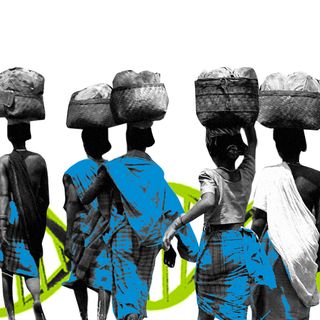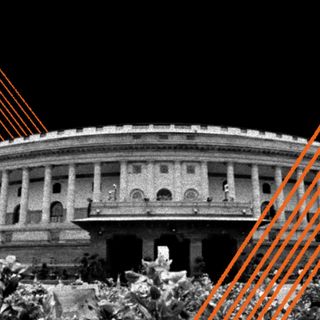
In Conversation: On Bras and Entrance Exams
The team discusses pressing events that say something about our culture, and why it matters. Today, how the insistence on humiliating female students appearing for an exam undermines autonomy and education.

The team discusses pressing events that say something about our culture, and why it matters. Today, we discuss the girls who were asked to remove their bras to prevent cheating in an examination, and why clothing stirs anxieties around decorum and discipline.
On Monday this week, students appearing for the National Eligibility-Entrance Test (NEET) near Thiruvananthapuram, Kerala, were forced to remove their bras before being allowed to write the exam. Officials at the testing center reportedly made the decision after the metal detector sounded off.
The incident sparked outrage for the way it violated the students’ privacy and autonomy, while also indicating deeper anxieties around the way we approach education access itself.
DR: STEM fields are already lacking in representation from people who aren’t cis-men — with causes ranging from prevalent gender stereotypes to rampant sexism in classrooms and in the careers that lie ahead. The consequences, of course, reflect in gender-and-sex-related disparities in research, besides the contemptible lack of knowledge experts exhibit when it comes to marginalized experiences in medicine. At this juncture, one would hope that we’re not trying to make things worse, at least, even if we’re not actively trying to improve them. But this dehumanizing incident crushes that hope — by pushing away marginalized populations from an already underrepresented field.
It’s not just unfair but also deeply traumatizing to aspirants who worked for years to score well on these tests — only to have their performance jeopardized at the last minute by the humiliation they’re faced with. Individual unfairness aside, it’s damaging to society’s holistic development too — especially since it means most “pathbreaking” pieces of research in these fields will benefit just one part of our population, since the researchers leading them will lack larger perspectives due to underrepresentation.
RN: The extremely invasive surveillance in this incident, besides the obvious misogyny and harassment, speaks to a larger anxiety around the sanctity of examinations-based merit. This is an idea that has been extensively debunked – but a confluence of extreme competitiveness, resource scarcity in education, and the convergence of exam performance with self-identity have all led to a situation where examiners stop at nothing to prevent “cheating.” In other words, there are so few opportunities for good education available and so many people competing for them that the public examination system pits young people against one another, gladiator-style, to fight for their right to receive quality education. Incidents like these highlight not just the grossly inappropriate behavior towards the girls in question, but point to a larger systemic exclusion at play: where many are discouraged to participate in the race through humiliating means. The logic is rooted in the problematic ideology of the “survival of the fittest,” that ultimately takes away from education being a fundamental right that should be accessible to all. Common entrance tests undermine this; and the extreme discipline enforced in their name is shameful as much as it is unacceptable.
AS: The tendency of the state to control every minute detail of even one’s attire in an examination can perhaps be seen as one extent of how exams act as tools of enforcing discipline in society. We should here keep in mind that in the larger scheme of things, these exams – just like the rest of our education system – are designed not to encourage original thought and curiosity as much as to create qualified yet unquestioning candidates who in the future may aspire to serve the state, thus furthering its own agenda. The dress code – a minor breach of which may result in humiliation (like the instance in question) or disqualification (as mentioned in booklets year after year) – is an accessory that the state makes use of to induce a fear among its subjects through a display of its punitive measures.
Related


‘Sexual Harassment’ Is Listed as an Unparliamentary Term, Eroding Accountability
